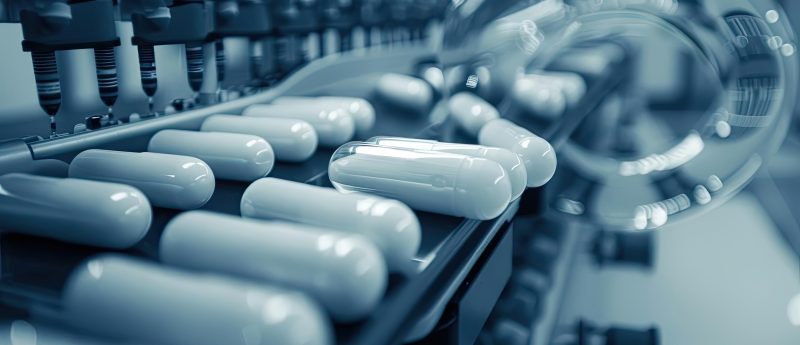The 3rd China Bioanalysis Forum annual meeting

This is article is available for free as part of our Focus on China, to view all other articles available as part of this feature click here.
Abstract
Shanghai, China, 13–14 June 2015
The third China Bioanalysis Forum conference was successfully held in Shanghai in June 2015. This year’s conference focused on biologics, biomarkers and regulated bioanalytical challenges. More than 150 delegates from pharmaceutical/biotech industry, CRO, clinical research centers, research institutes and regulatory agencies attended. This report summarizes the major discussion topics at the conference.
China Bioanalysis Forum (CBF), a nonprofit bioanalysis focused organization in China, was formed in September 2012 by a group of scientists who shared the same passion to accelerate the advancement of bioanalytical science in China. The CBF mission is to encourage the scientific interaction between academia and industry in the field of bioanalysis in China, to promote the harmonization of Chinese regulated bioanalytical guideline with international bioanalytical guidelines, to promote the execution of regulated bioanalysis in China based on the industrial best practice, to actively participate the harmonization and globalization of international guidance, and to provide the scientific education, technical training and talent development for local young scientists. CBF annual conference was organized with the aims of information exchange and networking among experts from academic institutes, clinical research, pharmaceutical/biotech industry, contract research organizations (CRO) as well as regulatory agencies. The first and second CBF annual conferences were successfully held in Shanghai in April 2013 and Beijing in June 2014.
The third CBF annual conference was held at Shanghai Institute of Material Medica (SIMM) in Shanghai on 13 June and 14 June 2015. More than 150 delegates from pharmaceutical/biotech industry, CRO, clinical research centers, research institutes and regulatory agencies attended. The theme of this conference was biologics, biomarkers and regulated bioanalytical challenges. It was the first time for CBF to invite international speakers who also participated in an open discussion with representatives from Chinese regulatory agencies.
Opening remarks
Professor Dafang Zhong (SIMM), co-chair of the 3rd CBF conference, gave a warm welcome to all conference attendees. He re-emphasized the important roles that CBF have been playing to support Chinese Pharmaceutical R&D. He also summarized the activities of CBF as following:
-
CBF Expert Committee (EC) participated in the first independent BMV Draft Guidance of China Pharmacopeia (version 2015). The guidance (in Chinese) has been finalized and will be effective on 1 December 2015
-
CBF experts published a few white papers in the areas of ISR and clinical bioanalysis in 2015. The conference report for 2nd CBF meeting was published by Bioanalysis as well.
-
Together with EBF, CBF co-sponsored ‘Meet the Dragon’ workshop in September 2014 and sent a few speakers to discuss the Chinese regulations of bioanalysis and the current status of Chinese early/later phase clinical research
-
CBF co-organized the Regulated Bioanalysis Session on CPSA Shanghai conference in 2015 and had joint session with Local Bioanalytical & Metabolism Discussion Groups and RDPAC Preclinical Focus Group.
Global & domestic perspectives in bioanalytical regulations
Dr Michael Anderson (Biologics Development Services), a member of AAPS LBA bioanalysis focusing group (LBABFG) Biosimilars Action Program Committee, emphasized that a biosimilar product must demonstrate the similarity to the innovator (totality of evidence) on physiochemical characteristics, biological activity, PK, efficacy and safety. He presented the recommendations from the committee on PK assays that a single assay with one calibration curve and one set of QC samples is acceptable to evaluate drug concentrations in biosimiar and reference comparison studies. For immunogenicity assays, if the goal is to demonstrate the biosimilar has equal to or less immunogenicity than innovator, a single assay approach is acceptable. If the goal is to demonstrate the true immunogenicity rates of each molecule, dual assay approach is then required.
Dr Surendra Bansal from Roche gave a good review on the history of various regulatory BA guidance and compared the major differences among those from US FDA, EMA, Japan and China. He pointed out that all guidance came from the same origin and therefore all of them were similar and contained no major differences, any minor differences could be accounted for by the progression in time when they were introduced, in the global bioanalytical workspace, it was the interest of everyone to look at the similarity of multiple guidance and respect the work conducted based on any guidance. He believed all guidance provided a high level of quality required in regulated bioanalysis.
Mrs Chenyan Gao, a representative from Center of Drug Evaluation of CFDA, introduced the newly published CFDA guidance on research and evaluation of biosimilar products. The guidance called for proof of biosimilar candidate to be similar to reference drug to go through different stages. For the drug determined to be biosimilar with no or little difference to reference drug in the comparability testing, some subsequent comparability tests may be exempted. For those with greater differences or uncertain factors, other comparability tests should be conducted with more sensitive techniques and more specific study design. To illustrate more, Mrs Gao mentioned that the biosimilar candidate could be determined as similar to the reference drug either in a comprehensive pharmacological comparative trial or in a comparative nonclinical study. When the candidate drug could not prove biosimilar in the pharmacological comparative tests which was also confirmed in nonclinical studies, the following studies for the drug should not continue as a biosimilar product and it might be developed as a novel drug.
Ms Jianan Wang from Center of Food and Drug Inspection (CFDI) of CFDA shared her experience as a regulatory auditor during the inspection of many Chinese bioanalytical laboratories and the most common issues she encountered. The regulatory audits were based on three major guidance from CFDA: guidance for quality management of clinical trials (2003), guidance for management of clinical Phase I studies (2011) and guidance for quality management of clinical trials (2014). She clearly listed the specific requirements for CFDI audits. Many issues during audits are discussed, including those related to organization chart, personnel training, laboratory facility, instrumentation, SOPs, sample management, method development, method validation, sample analysis, data management and final report.
Dr Minji Wei from Peking University Clinical Pharmacology Research Center discussed the format and content of bioanalysis reports for the application of marketing authorization of new drugs. He compared the requirements from CFDA, FDA and EMA guidance on this particular topic. Based on his extensive experience on drug application review, he listed a number of mistakes the applicants had made. He also proposed valuable suggestions for improvement in this area.
Biomarker
Dr Bin Ye from Shenogen gave a general review of the important roles and general trend of biomarker in translational research and clinical trials, especially in cancer research. He discussed the FDA guidelines in biomarker bioanalytical practice in clinical trials. To elucidate the role of biomarker, Dr Ye gave several examples of precision medicine and targeted therapy in lung cancer and clinical trial designs for maximum efficacy on targeted subpopulations. Finally, based on his experience, he discussed the biomarker strategy, challenge and opportunity to conduct China ‘first-in-class’ drug innovation and early clinical trials in liver cancer.
Professor Yu Li from Shanghai Jiaotong University also shared his experience in biomarker identification and relevancy in diseases such as colon cancer as well as life span extension. Professor Pei Hu from PUMCH illustrated the utility of modeling approach for PK prediction in Chinese population.
Challenges in bioanalysis
Jiang Luo from Wuxi AppTec discussed one of the most difficult tasks in LC–MS/MS analysis: measuring endogenous compound in biological matrices, which was due to the difficulty to find endogenous free blank matrix and calculate/set up QC concentrations. He listed three scenarios he encountered when endogenous level was much less than LLOQ, approximately 3× LLOQ and much higher than 3× LLOQ. Using different case studies, Jiang shared his experience of using surrogate matrix or modified matrix to replace authentic matrix to prepare for calibration standards and QC samples, and using either standard addition or surrogate analyte to deal with three different scenarios above.
Dr Wenzhong Liang, also from Wuxi AppTec, shared his experience in investigating the impact of blank matrices from different ethnic groups (Chinese vs Caucasian) on assay performance in LC–MS/MS analysis of ADC. In a case study, he found the matrix effect of blank matrices from different ethnic groups would cause issues in quantitative analysis. He investigated different ways of sample clean-up and concluded liquid–liquid extraction (LLE) was the best technique. He also optimized LLE conditions including shaking time and vortex speed to achieve satisfactory assay performance.
Dr Eric Liang from Novartis China gave an interesting presentation on continuing challenges after method validation for large molecule. He mentioned that the majority of his workload as a bioanalytical scientist in global pharma company was postmethod validation. The potential challenges could be predictable when the validated method moved from normal to patient population (ISR, selectivity and LLOQ, cut points for immunogenicity assays, matrix interference and parallelism, etc.) and the projects moved toward late stage development. However, many challenges might be unpredictable. He discussed several cases in which they faced issues of stability, lack/misuse of the anticoagulant when collecting the blood samples, changes of critical reagents, change in drug dosing regimen and assay interference. He suggested in order to manage the bioanalytical projects in an effective way, necessary sources and a solid quality system need to be in place to identify and resolve the predictable and unpredictable problems. In addition, we should understand the limitation of any bioanalytical assays and carefully deal with the change of the assays when needed.
Professor Haifeng Song gave a presentation entitled ‘Bioanalytical Challenges in Development of Biosimilar Products’. He discussed the popular topic of ‘how similar is similar?’ and explained that, instead of safety and efficacy, the challenges for analysis and bioanalysis were the similarity and comparability between the original biologics and biosimilar products. In his talk, different platforms for immunoassay such as ELISA, ECL, Gyros, SPR, AlphaLISA were compared. The method development and validation for ligand-binding assays (LBA) and immunogenicity assays were also discussed in details.
Young scientists presentations
One of the purposes for CBF conference is to encourage the exchange of new ideas and technology among young scientists. This year there were eight presentations from young scientists as following:
-
Development, validation and evaluation of three assays to detect anti-fusion protein therapeutic antibodies: ELISA versus Gyrolab versus ECLA (Cyril Xie, UPP).
-
Quantitative LC–MS/MS MEAsurement of PD-1 antibody in Cynomolgus monkey plasma (Yong Yang, SIMM).
-
Separation of pterins using HILIC techniques (Xin Xiong, Peking University Third Hospital).
-
Consideration and strategy to deal with stability issues for small molecule in bioanalysis (Guiying Chen, Huazhong University of Science and Technology).
-
Bioanalysis of liposome drug in clinical pharmacology study (Xin Zheng, Peking Union Medical College Hospital).
-
Difficulty analysis and strategy in peptides bioanalysis using LC–MS/MS (Guolan Wei, Covance).
-
Pharmacokinetics of oxycodone and three metabolites in Chinese cancer patients (Guangtao Hao, Academy of Military Medical Sciences).
-
Bioanalytical method development and sample analysis for large molecule in PK/TK studies following GLP regulations (Yao Tang, Food and Drug Safety Institute, National Institutes for Food and Drug Control).
The interactive Q and A session after each presentation provided excellent scientific discussion and learning opportunities for young scientists.
CBF future plans
CBF is planning several initiatives for the next year. First, with the publication of new BMV guidance of China Pharmacopeia (2015), CBF will continue to publish relevant white papers to help Chinese scientific community understand and implement the guidance. Second, we plan to organize a workshop focusing on large molecule bioanlaysis and possibly publish a few papers in this area. Third, we will continue to support Young Scientist Discussion Groups in Beijing and Shanghai to encourage scientific exchanges among young scientists in formal or informal gatherings. Last, CBD is exploring the possibility to organize our next annual conference with other disciplines to strengthen CBF’s influence in pharmaceutical development.
No writing assistance was utilized in the production of this manuscript.






